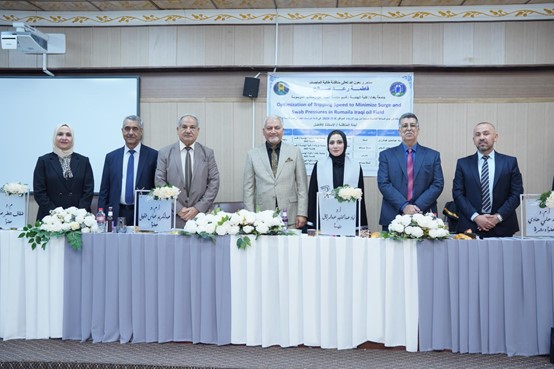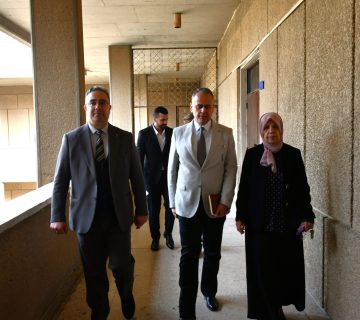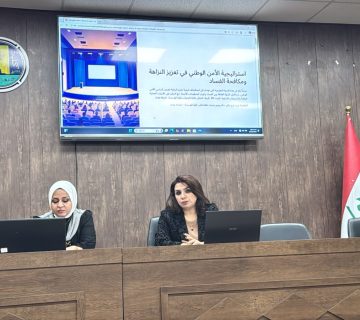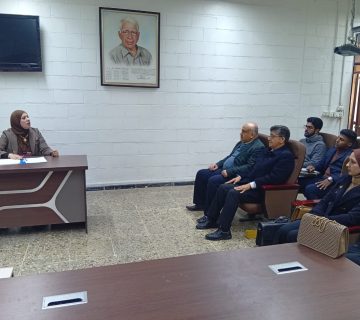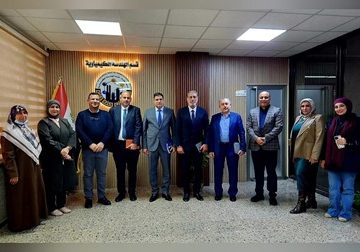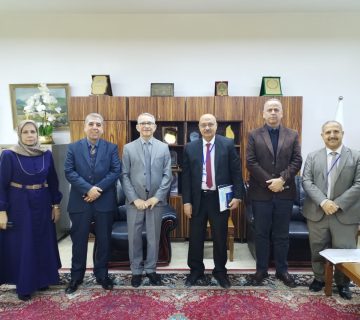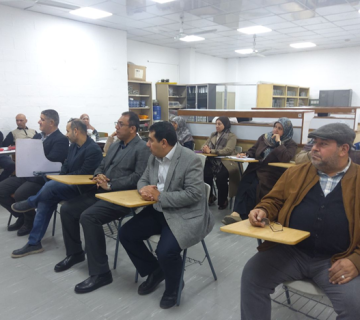The College of Engineering at University of Baghdad held a public debate of the MSc student (Fatima Raad Salih) in the Department of Petroleum Engineering about her thesis titled (Optimization of Tripping Speed to Minimize Surge and Swab Pressures in Rumaila Iraqi Oil Field) on Wednesday (6th of March, 2024) in the Graduate Studies Hall of the Department of Petroleum Engineering.
The examining committee consisted of the following:
1- Prof. Dr. Ayad A. Alhaleem A. Alrazzaq (Chairman)
2- Asst. Prof. Dr. Abdulkareem A. Khalil (Member)
3- Lect. Dr. Dhifaf Jaafar Sadiq (Member)
4- Asst. Prof. Dr. Farqad Ali Hadi (Member and Supervisor)
The thesis is summarized as follows:
Surge effects arise when the pipe is suddenly descended or lowered into the hole section of wellbore with mud circulation, resulting in the generation of extra bottom hole pressure known as “surge pressure”. Excessive surge pressure may lead to formation breakage, partial mud loss, and loss circulation. Conversely, the swabbing effect occurs when the drill string is extracted from the hole at an excessive speed resulting in a decreasing the bottom hole pressure, known as “swab pressure”. Excessive swab pressure leads to the occurrence of a kick (wellbore inflow) in the wellbore.
This work aims to reduce tripping time by controlling the swab and surge phenomena by calculating the maximum pipe tripping speed without experiencing surge and swab, as well as analyzing surge and swab pressures while tripping through formations with lost circulation in the Rumila oil field. Also, investigate the influence of different drilling parameters, such as rheological models, mud density, yield point, plastic viscosity, annular clearance, and BHA size and length, on swab/surge pressure. Another objective is to assess how accurate is the transient surge and swab model by doing a comparison study with the steady state model. Furthermore, the study investigates the impact of mud temperature on surge and swab pressures.
Steady state and transient surge and swab models have been constructed using drilling simulation software (Landmark, V. 2015, well plan). The steady state surge and swab ECD was analyzed for both close-ended and open-ended strings. Also, surge and swab pressures and ECDs were determined for tripping casing through lost circulation formations. A sensitivity study was performed to find out the impact of different drilling parameters on surge and swab ECD. Furthermore, a comparison between surge and swab models has been done. Moreover, a transient surge and swab model has been validated using field data that obtained from PWD (Pressure While Drilling) tools. In addition, an investigation was conducted to examine the impact of eccentricity and mud temperature on surge and swab pressure.
The findings indicated that the surge/swab ECD for a close-ended string is relatively bigger than that obtained for the open-ended string at speeds higher than 20 sec/stand. According to the sensitivity analysis, the tripping speed has the greatest effect on surge and swab ECD. In addition, the annular clearance and BHA diameter have a significant impact on surge and swab ECD. They found to have an impact degree of (0.316) and (0.305) on surge and swab. While the PV affected surge and swab ECD by a small extent (0.026). The results also showed that the steady state model over predicts the surge and swab ECD of approximately (0.2ppg) when it is compared to the transient model which revealed a very good match with the field data. It is concluded that increasing mud temperature resulted in a reduction in the surge ECD.


